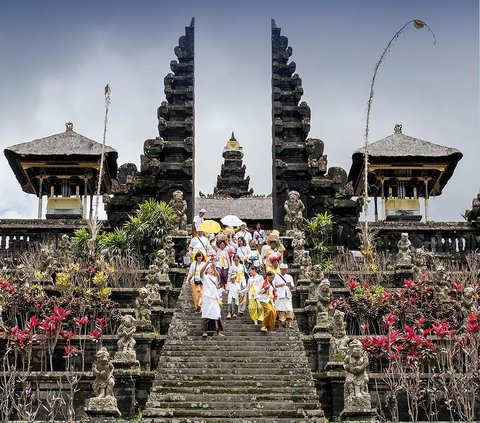At the heart of Balinese life are its intricate ceremonies, which blend spirituality, community, and devotion. These rituals, passed down through generations, serve as a living testament to the island’s deep-rooted cultural heritage and attract curious travelers from around the globe.
For visitors, exploring Balinese ceremonies is more than just witnessing a spectacle; it’s an opportunity to connect with the island’s spiritual and cultural essence. From vibrant purification rituals by the sea to solemn cremation ceremonies, each tradition tells a story of harmony and reverence. This article delves into some of Bali’s most significant ceremonies and their enduring relevance today.
Balinese Ceremonies and Their Significance Today A Cultural Journey
Here are five significant Balinese ceremonies and their meanings today.
1. Melasti Ceremony
The Melasti ceremony is a purification ritual conducted before the Nyepi Day celebrations. Balinese Hindus bring offerings and sacred symbols such as pratima (statues) to the sea or other water sources to be cleansed. Melasti symbolizes the purification of the self and nature from all negative energies.
Tourists often witness the beauty of this procession as part of Bali tour activities, particularly on beaches such as Sanur or Kuta. This grand ceremony offers insight into the deep connection between the Balinese people and water as a symbol of purification.
2. Ngaben Ceremony
Ngaben is a traditional cremation ceremony that serves as a way for Balinese Hindus to honor their ancestors. This ritual aims to release the soul from its earthly body so it can reach the spiritual realm. Ngaben is usually performed with intricate customs, accompanied by gamelan music, and attended by extended family.
This ceremony is not only a significant moment for families but also draws the attention of visitors interested in understanding Balinese philosophies of life and death. With the help of a Bali driver, tourists can visit villages where Ngaben ceremonies take place to experience this unique tradition firsthand.
3. Galungan and Kuningan Ceremonies
Galungan and Kuningan are major celebrations symbolizing the victory of dharma (truth) over adharma (evil). Galungan lasts for 10 days, culminating in Kuningan. During this time, Balinese people decorate their homes and temples with penjor (bamboo poles) and participate in communal prayers.
Visitors who arrive during Galungan and Kuningan can feel the sacred and festive atmosphere throughout Bali. Bali tour packages often include opportunities to join these celebrations, providing a deep understanding of Balinese traditions and community togetherness.
4. Omed-Omedan Ceremony
Omed-Omedan, also known as the “mass kissing ritual,” is a unique tradition held in Sesetan Village, Denpasar. This ceremony is performed by young villagers after Nyepi Day as a symbol of unity and joy. It involves a tug-of-war between groups of men and women, often ending with symbolic kisses.
This tradition has become a special attraction for visitors eager to witness Bali’s unique cultural side. With the assistance of a Bali driver, you can easily reach the event location and experience the excitement of this ceremony.
5. Saraswati Ceremony
Saraswati is a day dedicated to honoring Dewi Saraswati, the goddess of knowledge, art, and wisdom. On this day, Balinese people offer prayers at temples, schools, and homes to seek blessings of knowledge and wisdom. Books and writing tools are also revered as symbols of learning.
The Saraswati ceremony often intrigues visitors who wish to see a celebration blending spirituality and education. As part of Bali tour activities, many cultural tours invite travelers to visit temples and schools during this special day.
These five traditional ceremonies not only preserve the spiritual values of the Balinese people but also highlight the strong role of local culture in daily life. Visitors interested in these rituals can turn them into opportunities to gain a deeper understanding of Balinese philosophies of life.








